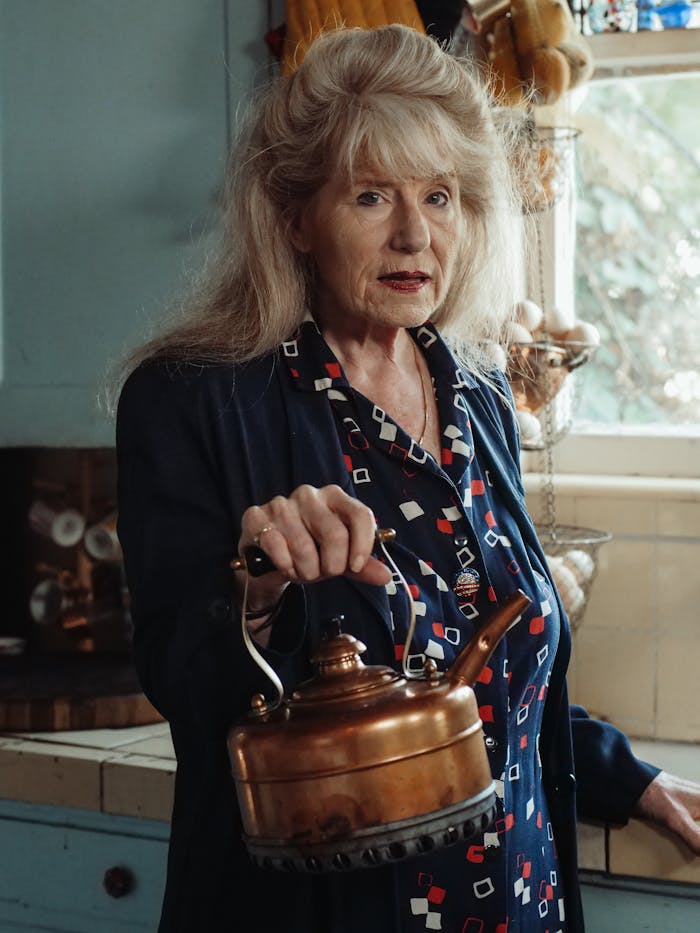Old fashioned apron pattern are a charming throwback to a time when domestic crafts were not just practical but also an art form. These patterns reflect a rich history, showcasing traditional designs that have been passed down through generations. In this article, we’ll explore the history of aprons, delve into the specifics of old fashioned patterns, and offer a guide to using and crafting these timeless garments.
The History of Aprons
Early Uses and Designs
Aprons have been around for centuries, originally designed as protective garments for those working in kitchens, workshops, and farms. Early aprons were simple, often made from durable materials like leather or burlap. They were functional, designed to shield clothing from stains and wear.
Evolution Through the Ages
As time progressed, aprons evolved from practical items into symbols of domesticity and fashion. In the 19th century, aprons began to feature intricate designs and embellishments, reflecting the social status and personal style of their wearers. By the early 20th century, aprons had become a staple in households, with patterns available in a variety of styles and fabrics.
Understanding Old Fashioned Apron Pattern
Key Characteristics
Old fashioned apron pattern are distinguished by their classic silhouettes and vintage details. Common features include full skirts, gathered waists, and decorative trims. These patterns often emphasize functionality and simplicity, with designs that make them easy to wear and adjust.
Popular Fabrics and Materials
Traditional apron fabrics include cotton, linen, and gingham, which offer durability and ease of care. Each material brings its own unique texture and style to the apron, from the crispness of linen to the softness of cotton. Understanding these materials can help you choose the best fabric for your project. Read some about chicago fashion show.
How to Read and Use Old Fashioned Apron Pattern
Basic Pattern Terminology
To effectively use old fashioned apron pattern, it’s essential to understand basic pattern terminology. Key terms include “seam allowance,” “grain line,” and “notches.” Familiarizing yourself with these terms will help you follow patterns more accurately.
Tools and Materials Needed
To begin, you’ll need basic sewing tools such as scissors, pins, and a sewing machine. Additionally, having a good pattern marker and ruler will aid in accurately transferring the pattern to your fabric.
Step-by-Step Guide to Using Patterns
- Prepare Your Fabric: Wash and iron your fabric before cutting.
- Cut the Pattern Pieces: Follow the pattern instructions to cut out each piece.
- Sew the Apron: Assemble the apron by following the step-by-step sewing instructions.
Crafting Your Own Apron
Choosing the Right Pattern
Selecting the right pattern involves considering your skill level and the desired final look. Simple patterns are ideal for beginners, while more intricate designs may appeal to advanced sewers.
Measuring and Cutting Fabric
Accurate measurements are crucial for a well-fitting apron. Use a measuring tape and follow the pattern’s guidelines to cut your fabric pieces precisely.
Sewing Techniques for Beginners
For beginners, starting with basic stitches and techniques is recommended. Practice sewing straight lines and turning corners to achieve a polished finish on your apron.
Modern Interpretations of Old-Fashioned Aprons
Contemporary Designs
Today’s fashion designers often draw inspiration from old-fashioned apron patterns, incorporating vintage elements into modern designs. These aprons may feature updated fabrics, colors, and styles while retaining their classic charm.
How to Incorporate Old Patterns in Modern Fashion
Incorporating old patterns into modern fashion can involve adapting traditional designs to contemporary tastes. Consider adding trendy elements or using modern fabrics to give vintage patterns a fresh look. Old fashioned patron.
Expert Insights and Case Studies
Interviews with Fashion Historians
Fashion historians provide valuable insights into the evolution of apron patterns. Their expertise helps us understand how historical trends have influenced current designs.
Examples from Historical Collections
Exploring historical collections reveals how aprons have changed over time. These examples offer a glimpse into the craftsmanship and artistry of past eras.
Practical Applications and Tips
Aprons in Everyday Life

Aprons are not just for cooking; they have practical uses in gardening, crafting, and other activities. Choosing the right apron for each task can enhance your comfort and efficiency.
Care and Maintenance of Aprons
Proper care ensures that your aprons remain in good condition. Follow washing and maintenance instructions specific to the fabric and design of your apron.
Future Outlook and Emerging Trends
Innovations in Apron Design
The future of apron design includes innovations such as adjustable features, multifunctional designs, and eco-friendly materials. These advancements aim to enhance the functionality and appeal of aprons.
Predictions for Future Trends
As fashion continues to evolve, aprons will likely see new trends and styles emerge. Staying updated on these trends can help you incorporate the latest designs into your wardrobe.
Conclusion
Summary of Key Points
Old-fashioned apron patterns offer a fascinating glimpse into the past while remaining relevant today. From their historical roots to modern interpretations, aprons continue to be both functional and stylish.
Final Thoughts and Call-to-Action
Embrace the charm of old-fashioned aprons by exploring patterns and crafting your own. Whether you’re a seasoned sewer or a beginner, there’s a timeless appeal in creating something beautiful and practical.



